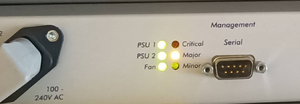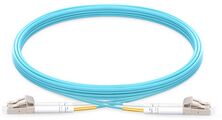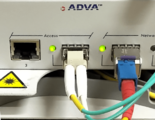Ethernet Port Settings: Difference between revisions
| Line 5: | Line 5: | ||
The Ethernet services are presented in different ways depending on the link speed you have requested. |
The Ethernet services are presented in different ways depending on the link speed you have requested. |
||
===1Gb/s ( |
===1Gb/s (Standard) === |
||
'''Main point:''' |
'''Main point:''' |
||
Revision as of 09:05, 5 March 2024
This information is in relation to our Etherway/Etherflow and EAD services.
Link speed
The Ethernet services are presented in different ways depending on the link speed you have requested.
1Gb/s (Standard)
Main point:
- Customer router connects to Openreach supplied ONT via Fibre patch lead, not copper RJ45.
For 1Gbit/s bearers, the connection from the Openreach NTE to the customer equipment is presented using multimode mode fibre on LC connectors. A suitable SFP for the customer equipment would be a 550m MMF 850nm SX SFP and a length of multimode cable with LC connectors at each end. your router/switch would also need a SFP port. We can supply a suitable SFP and cable if you require.
The Openreach NTE does have a copper RJ45 port as well as an SFP port for connection to the customer router - however, the copper port is disabled by Openreach and the fibre port should be used. If customer router only has RJ45 copper ports, then a little media convert would be required. These are available for under £20 - eg a TP-Link MC220L.
This link should be used with an auto-negotiation port which is the default for gigabit links
In most cases, it is possible to replace the Openreach supplied SFP with something different, eg a DAC cable, this may light an error LED on the Openreach box though, and so cause confusion in the event of a fault. We'd also require that the Openreach supplied SFP is used in the event of a fault report.
The ONT requires power, and has two IEC sockets for resilience. eg, you can use a UPS on the 2nd power socket to power the unit in the event of mains power loss.
-
Openreach NTE for 1G circuits
-
SX SFP for customer equipment
-
Multimode patch lead
-
Close up
100Mb/s (No longer offered)
For 100Mbit/s links the service is presented using a normal Ethernet (copper) RJ45 connector. You use a normal cat-5 Ethernet patch lead to connect this to your switch, router or firewall as you required.
IMPORTANT the port on the Openreach supplied unit is sometimes configured as fixed full duplex. This means that if it is connected to an un-managed switch or un-configured port on a switch, router or firewall then it will not work correctly. It will seem to work, but as soon as any reasonable level of traffic flows there will be dropped packets seriously hindering upload speeds. You must have a managed switch or port connected to the link and configure the port to be fixed full duplex 100Mbit/s for it to work correctly. We can supply a small managed switch for this purpose if you require.
Cabling is a straight through cat5e patch lead to your managed switch.
10Gb/s
For 10Gbit/s you will need special 10Gbit/s equipment, contact sales when ordering for details.
VLANs
At the customer side the service is presented on a VLAN. The VLAN ID will be discussed during the order process.
The link you have can carry one or more service - the common one being for internet access. However the same link can have internet access and site-to-site access, and multiple such services and different speeds. All of the services will have a separate VLAN tag.
Where there is only one service on the link then this can be set to operate with no VLAN tag.
Where a dedicated site-to-site fibre is used then any packets simply go to the other end including any VLAN tags. This link is effectively a very long Ethernet cable, though still subject to packet size limits.
Packet size
Packet sizes up to 1548 are permitted on site-to-site traffic. Internet access is limited to 1500 bytes (plus VLAN tag where needed).
Technical details
See BT SIN 476 for technical details.
LED Status
PSU LEDs
There are two power supplies, PSU1 and PSU2
- Off - No power - check cabling, power, etc
- Red - PSU Failure - contact us
- Green - PSU OK
Network
This is the LED next to the socket for the lead-in fibre - the cable coming in from outside:
- Red - fault, or not connected
- Green - OK
Access
This is the LED next to the socket for your router
- Red - fault, or not connected
- Green - OK
For FSP150CP Units:

Critical
- off: normal, no alarms
- red: Indicative of a problem between the ADVA unit and the on site router (Check router has power and the cables connecting the two have not been disconnected, try rebooting, if problem persists
Major
- off: normal, no alarms
- on: Indicative of a problem with the access carrier, normally means the unit is not connected to the local exchange (Power cycle ADVA unit and carefully re-seat fibre into ADVA, if problem persists contact us
Minor
- off: normal, no alarms
- on: Minor problem exists, contact us.



